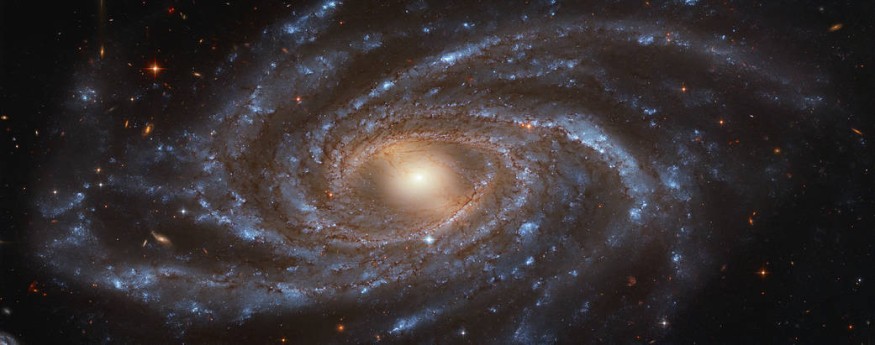NASA Hubble Space Telescope recently released another set of stunning photos showing different galaxies thousands of light-years away from our planet. These galaxies are NGC 3224 and NGC 2336.

Hubble Space Telescope Detects NGC 3224
Hubble Space Telescope recently shared a breathtaking view of hills and valleys in the star-forming region NGC 3324 on its official Instagram page. The galaxy is roughly 7,200 light-years away.
"Travel over cosmic hills and valleys in this breathtaking #HubbleClassic view of the star-forming region NGC 3324, roughly 7,200 light-years away. Each dark tower of dust and gas you see actually spans light-years in height!"
The picture has gained over 20,000 likes, 90,000 shares, and 100 comments since they posted it.
According to NASA, NGC 3324 is located in the Carina Nebula (NGC 3372), home to the Keyhole Nebula and the active, outbursting star Eta Carinae. The Carina Nebula cluster is located in the constellation Carina at a distance of around 7,200 light-years.
The video depicts a "landscape" view of a star-forming area in the universe, complete with "hills and valleys" of gas and dust. According to NASA, wispy tendrils of gas and dark trunks of dust that are light-years in height have been set against a background of soft, glowing blue light.
The image also contains a three-dimensional Hubble image that clearly shows the edge of the giant gaseous cavity inside NGC 3324, a star-forming region. Intense ultraviolet radiation and stellar winds from many young, hot stars carved out the glowing nebula.
Hubble Space Telescope Sees NGC 2336
The Hubble Space Telescope sent home a spectacular picture of the large, majestic, and beautifully blue galaxy just days before it was partially shut down due to a technical glitch earlier this month.

NGC 2336 is the quintessential galaxy — big, beautiful, and blue — and it is captured here by the NASA/ESA Hubble Space Telescope. The barred spiral galaxy stretches an immense 200,000 light-years across and is located approximately 100 million light-years away in the northern constellation of Camelopardalis (the Giraffe).
NASA posted an image of NGC 2336 on Mar. 5. It's a galaxy about 100 million light-years from Earth in the constellation Camelopardalis (aka the Giraffe), two days before Hubble Space Telescope mysteriously went offline. Since then, the telescope has become operational again.
NASA describes NGC 2336 as "the quintessential galaxy" in a statement about the new picture. NGC 2336 is a barred spiral galaxy, which means it has a star-dense central area in the form of a bar, with arms spiraling out from the ends. According to NASA, the galaxy is also very wide, measuring 200,000 light-years long.
The spiral arms of NGC 2336 are particularly breathtaking because of the brilliant blue stars twinkling in them. This is a young star that emits a bright blue light. A darker, redder region in the middle of NGC 2336 is mainly made up of older stars.
This "quintessential galaxy" was discovered in 1876 by German astronomer Wilhelm Tempel using a slightly smaller telescope than Hubble's, with a mirror around one-tenth the size of Hubble's.
The said galaxy is different from IC 1101, which is 50 times our Milky Way's size and measures 5.5 million light-years long. Even then, it's on the larger side than most spiral galaxies, which range in size from 16,000 to 300,000 light-years wide.
RELATED ARTICLE : Very Large Telescope Spots Cosmic Web With Maze of Dwarf Galaxies
Check out more news and information on Space on Science Times.
© 2025 ScienceTimes.com All rights reserved. Do not reproduce without permission. The window to the world of Science Times.












